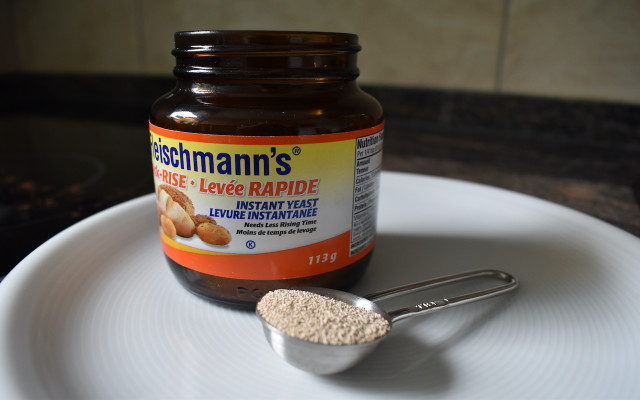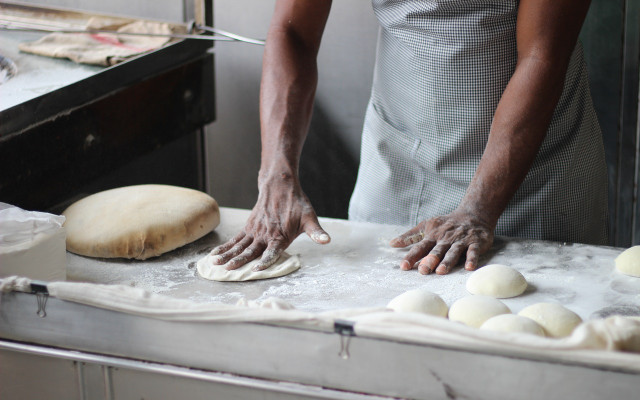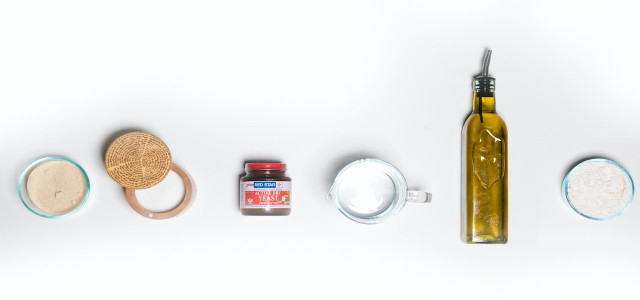Unless you’re baking in bulk, yeast comes in quantities much larger than needed for a single recipe. We’ll show you how to store the different types of yeast, which types you can freeze and how to tell if it is still active.
Yeast is a live culture commonly used in baking, brewing, and making wine. There are different varieties of yeast out there, and each one has its own characteristics. Some types can be used interchangeably, but others have one specific purpose. We’re going to take a closer look at the common forms of baker’s yeast.
The scientific name of baker’s yeast is Saccharomyces cerevisiae, though it’s commonly known as the sugar-eating fungus. These single-cell fungi feed off of sugars in order to get the energy to grow, which releases carbon dioxide and causes dough to rise.
How to Store the Different Forms of Yeast

Instant Yeast
- This is the most commonly used yeast variety because it doesn’t require dissolving before adding to a recipe.
- How to store: Instant yeast is very shelf-stable and can be stored in a dry, airtight container at room temperature until the expiry date printed on the jar.
Active Dry
- This type of yeast requires dissolving it in warm liquid to be activated (proofing). It’s important to keep the water temperature below 115°F otherwise it will kill off the yeast. You will commonly find this type sold in envelopes or jars. (Jars need to be placed in the fridge once opened.)
- How to store: This type of yeast is typically sold in single-serve envelopes or jars, which need to be placed in the fridge once opened and used by the expiration date.
Fresh Yeast
- Fresh yeast is sold in compressed block form and is extremely perishable, so you’ll find it in the refrigerated section of your grocery or health food store. It needs to be dissolved in liquid before adding to a recipe.
- How to store: Fresh yeast should always be kept refrigerated and used within a week or two of purchase.
Liquid Yeast
- A slurry of live yeast organisms, carbohydrates, and water — similar to sourdough starter.
- How to store: Liquid yeast will keep in the refrigerator as long as fresh carbohydrates are added on a regular basis.
Instant and active dry yeast can be used interchangeably, just remember to proof the active dry before using!
Did you know that you can make yeast at home?
Can You Freeze Yeast?
Yes, you can freeze yeast, just not every type. It’s important to pay attention to a few things if you want to store your yeast in the freezer:
- Only freeze newly purchased dry yeast with a good best-before date.
- Make sure it is in an airtight container – the jar it comes in works well.
- Don’t freeze fresh yeast — it will not be usable afterwards.
When you’re ready to use yeast from the freezer, simply add it to room temperature water to wake it up from its hibernation.
How to Tell If Yeast Is Still Active



If you’ve been storing your yeast for quite a while, it’s a good idea to test whether or not it is still active before adding it to your recipe.
- In a 1-cup liquid measuring cup, dissolve 1 teaspoon of sugar in ½ cup warm water (no warmer than 115 °F).
- Stir in one ¼ ounce package or 2¼ teaspoons of room temperature dry yeast until none are floating at the top.
- After about 3–4 minutes, the yeast should activate and start to rise.
- Once 10 minutes have passed, the foam should have risen to the 1 cup mark and is ready to be used.
- If it fails to rise, the yeast has little to no activity and shouldn’t be used.
Tip: Remember to deduct ½ cup liquid from your recipe to make up for the fact that you’ve already used some!
** Links to retailers marked with ** or underlined orange are partially partner links: If you buy here, you actively support Utopia.org, because we will receive a small part of the sales proceeds. More info.Do you like this post?







